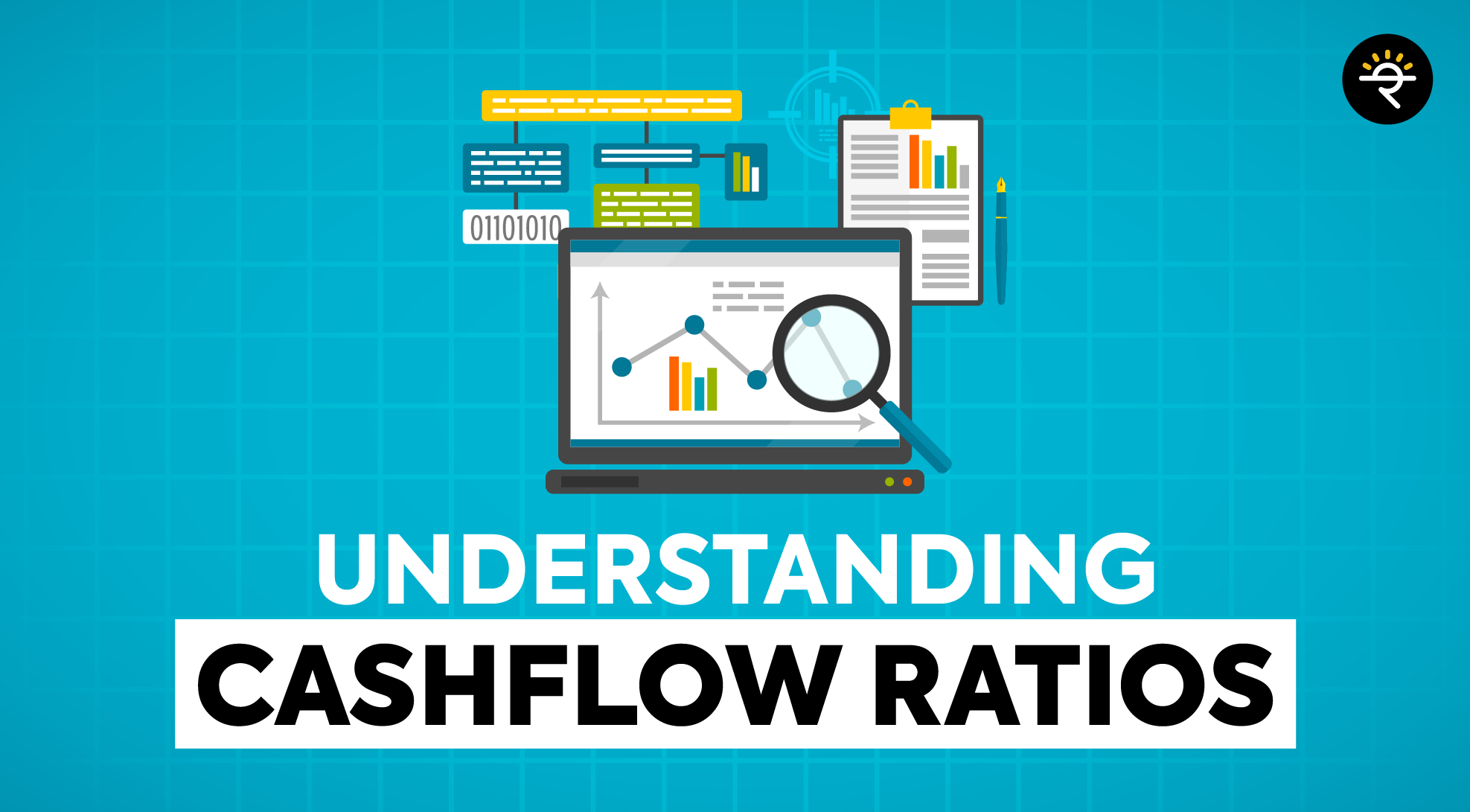There are no items in your cart
Add More
Add More
| Item Details | Price | ||
|---|---|---|---|

In the last blog, we understood what are cashflows of a business and how are they segregated into different business activities. Now let us understand what cash flow ratios are and how to interpret them by considering an example to see their practical application.
Imagine you are an investor looking to buy shares of Company X, a technology company. You've received their financial statements and want to assess their cash flow ratios to make an informed decision. So, you decide to compare its sales with its Operating profit which is basically the Operating Cash Flow Ratio
Operating Cash Flow Ratio = Operating Cash Flow / Total Revenue or Sales
This is the cash generated from a company's core operating activities, such as selling products or providing services. It represents the cash flow before deducting interest and taxes. It includes cash received from customers and cash paid to suppliers, employees, and other operating expenses. The resulting ratio represents the proportion of a company's total revenue that is converted into operating cash flow. A higher Operating Cash Flow Ratio indicates that a company is efficient in generating cash from its core operations.
For example, if a company has an Operating Cash Flow of INR 5,00,000 and its total revenue is INR 10,00,000, the Operating Cash Flow Ratio would be:
Operating Cash Flow Ratio = 5,00,000 / INR 10,00,000 = 0.5 or 50%
In this case, the company's Operating Cash Flow Ratio is 50%, which means that 50% of its total revenue is converted into operating cash flow, this ratio is used to assess a company's operational efficiency and its ability to sustain and expand its operations without relying on external financing. A higher ratio indicates that a company can generate more cash from its core activities relative to its revenue, which is generally considered a positive sign.
Another pertinent ratio which is used to assess a company's ability to service its debt obligations by comparing its operating cash flow to its total debt is called Cash Flow to Debt Ratio. This ratio provides insight into a company's capacity to generate cash to meet its debt payments and indicates the level of financial risk associated with its debt load.
The formula for calculating this ratio is: Operating Cash Flow / Total Debt
For example, if a company has an Operating Cash Flow of INR 10,00,000 and its total debt is INR 20,00,000, the Cash Flow to Debt Ratio would be:
Cash Flow to Debt Ratio = INR 10,00,000 / INR 20,00,000 = 0.5 or 50%
In this scenario, the Cash Flow to Debt Ratio is 50%, which means that the company's operating cash flow can cover 50% of its total debt. This ratio is used to evaluate a company's ability to meet its debt obligations. A higher ratio is generally seen as a positive sign, indicating that the company is better positioned to handle its debt load without significant financial strain. Conversely, a lower ratio may suggest that the company could face challenges in servicing its debt, potentially leading to financial difficulties or default
Understanding cashflows is not enough, Interpreting cash flow ratios is fundamental for assessing a company's financial well-being and performance. To do this effectively, we can compare these ratios to respective industry benchmarks, recognizing that different sectors have distinct norms. It's also crucial to analyse the historical trends of these ratios to discern patterns, whether they are improving or declining. Considering the relationships between different ratios can be enlightening, such as a high operating cash flow but low free cash flow, which may indicate re-investment or operational inefficiency. We can investigate the factors driving changes in these ratios; for instance, a decrease in the cash flow margin could be attributed to increased expenses or reduced sales. The interpretation could be aligned with the investment horizon, whether you're a short-term investor focusing on liquidity or a long-term one prioritizing solvency. Furthermore, comparing these ratios with industry peers can unveil operational efficiency or competitive disadvantages. Understanding the sources and uses of cash within the company is vital, as high capital expenditures may indicate a focus on growth, while substantial free cash flow may suggest returns to shareholders or debt reduction. Be mindful of industry-specific norms, as they can vary significantly; for instance, tech companies may reinvest more, while utilities often maintain stable cash flows.
We can emphasize on the insights from the company's management regarding their cash flow strategies, expansion plans, or cost-cutting initiatives. Lastly, we can also assess the risk associated with low or high ratios; low liquidity and solvency ratios might signify financial distress, whereas high ratios could indicate conservative management or underutilized resources. Interpreting cash flow ratios should always be tailored to specific circumstances, accounting for industry dynamics, historical trends, and your unique investment goals. These ratios serve as invaluable tools for making well-informed investment and financial decisions.
However, even these ratios have their limitations like these ratios can be affected by management's decisions, such as the timing of capital expenditures or changes in accounting policies. Cash flow ratios don't consider the quality of earnings. A company might have high cash flow due to aggressive accounting practices, which may not be sustainable in the long term. While it's difficult to manipulate cash flow itself, a company can manipulate cash flow ratios indirectly through aggressive accounting practices or financial engineering.
To understand further intricacies of the financial statements, in a very simple and easy to understand language refer my course on Fundamental Analysis.
Till then take care, Jai Hind, and bye-bye!!!